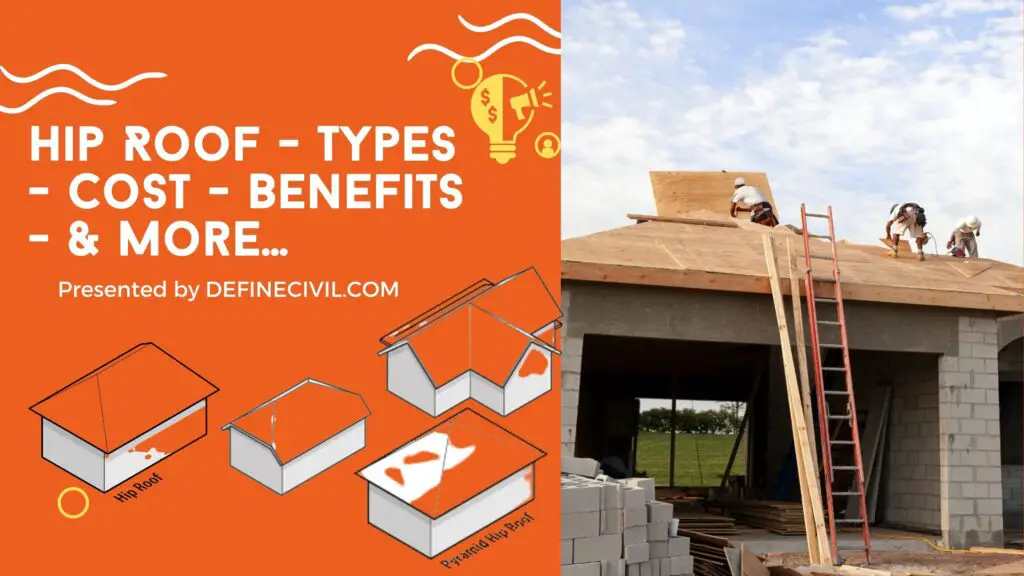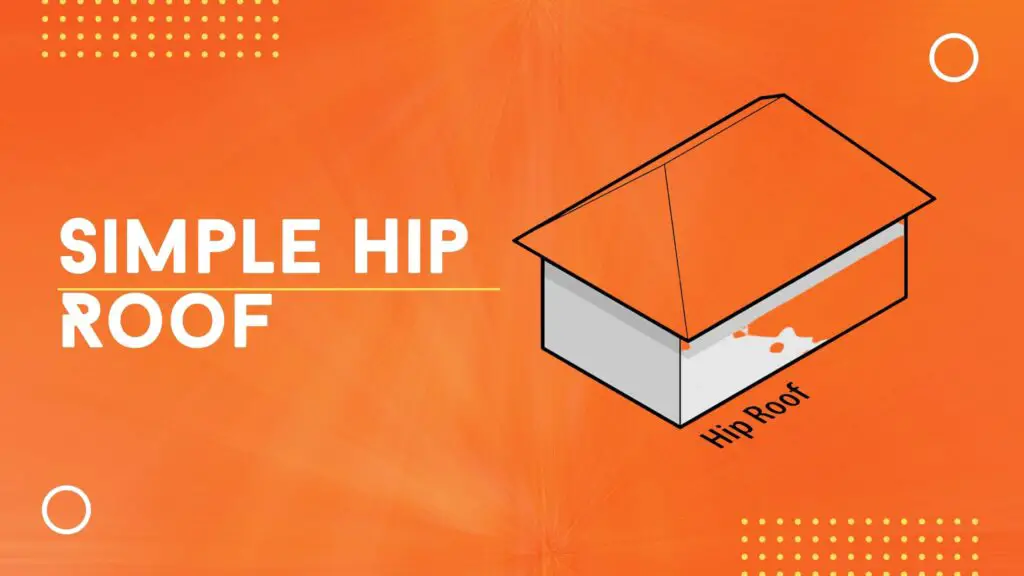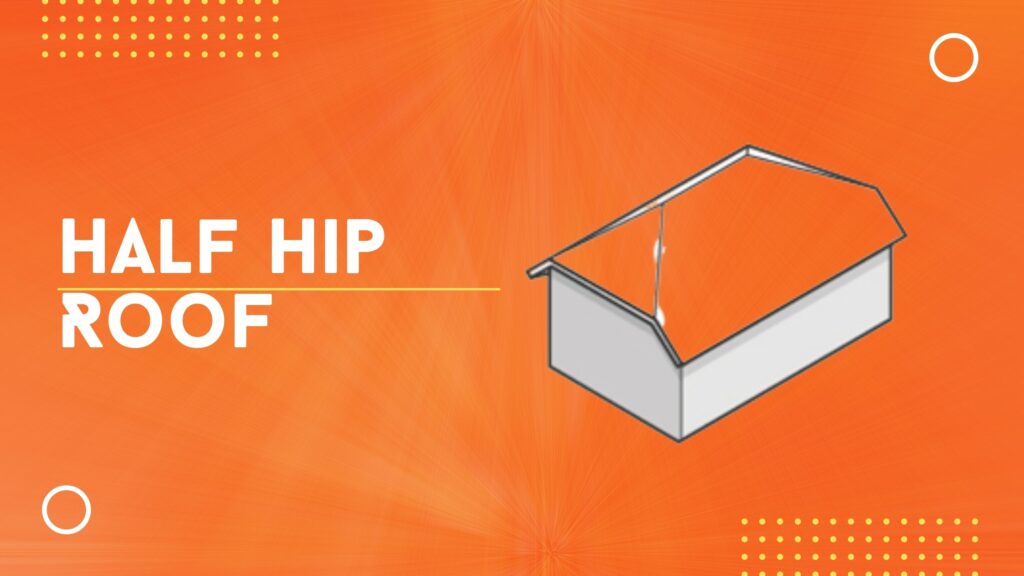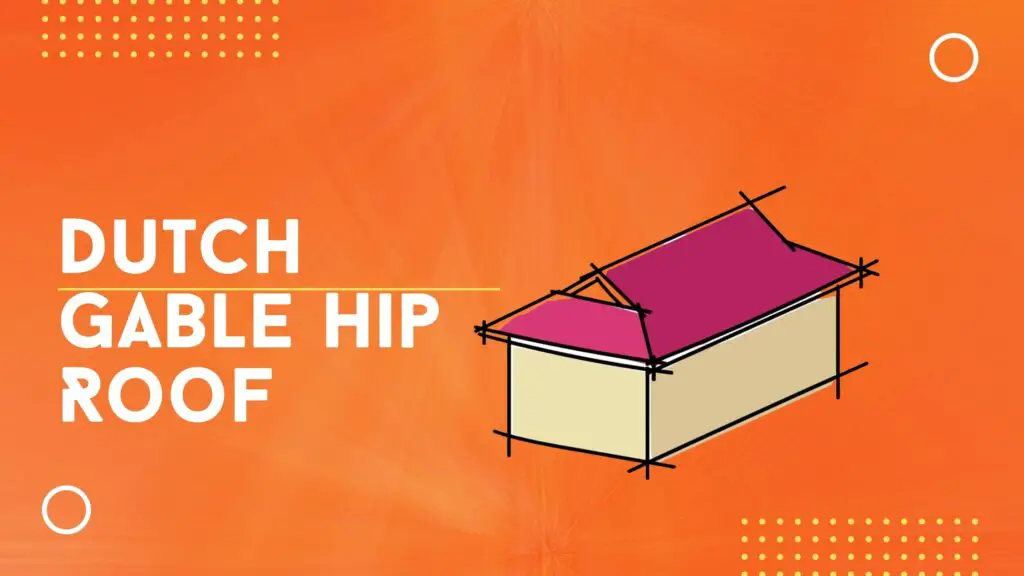Hip roof is one of the most popular types of roofing in the United States, though many people don’t know what they are called or how they work.
A hip or angled roof, is basically a type of roof which is slThey are affordable and easy to build.oping downward from crest to edge on all of it four sides. All the sides of roof are not parallel to the ground like a flat roof.
These all-sloping sides meet at a point with angle more than 180 degrees. This external angle formed because of meeting sloping lines is known as hip. These sloping lines have equal length and slops on all of its four sides therefore hip roof is symmetrical about center lines.
They are affordable and easy to build if you hire trusted experts in your area like Best Roofers in Berlin CT.
This type of roofing has several distinct features that make it unique among other types of roofs, including hips and ridges.

Types of Hip Roof
There are following types of hip roofs :
- Simple
- Half shape
- Cross-shaped roof
- Pyramid Hip
- Dutch Gable roof
- Tended Hip
Simple
A simple hip roof consists of two sides that are trapezoidal while the other two sides are triangular in shape. The two trapezoidal sides meet at the top and triangle connects them which is shown in figure below.

Half Hip
In this type, lower half triangular sides are cut off and forms half hip roof. This is shown in figure below

Cross-Shaped Roof
It consists of two simple roofs arranged in L-shape or T-shape. The place where two individual hip roof meet forming L-angle or T-intersection is known as valley. This is shown in picture below:

Pyramid
The pyramid shape is ideal for a square shaped building. It comprises of four triangles that meet at one point called crown. Unlike other types, a pyramid roof doesn’t have a ridge beam. There’s only one point at the top. But this roof is not suitable for rectangular buildings.

Dutch Gable
A Dutch type offers combined benefit of hip and gable roof. It is durable roofing with additional space inside at the top. At the top of the hip roof plane, we provide a gable at the end. Since it offers more natural sunlight than simple type it can reduce heating costs in winters. You can also add a window in the top to let more light in.

Tented
For a building in polygonal or octagonal shape, a sharply pitched roof is provided called tented shaped. The steeply-pitched slopes rising to a peak; offers best design for tiny house. This roof has been the choice for most churches. It has been a hallmark of medieval religious architecture.

Also Read: 11 Differences between a Column and a Strut (MUST KNOW)
Components
Hip roof constitutes of following components
- Common Rafter
- Hip Rafter
- Jack Rafter
- Ridge Board
Common Rafter:
These are inclined wooden member laid from ridge to eaves. Its purpose is to center ridge board and to give construction height to the roofing.
Hip Rafter:
These are sloping rafters forming the hip of sloped roof. They are laid diagonally from ridge to corner of wall to support roof covering.
Jack Rafter:
They are lesser in length as compared to common rafter and laid from hip to eaves.
Ridge Board:
Its purpose is to provide upper most part of construction and to support common and hip rafter in roof construction.
Design
Hip roof is designed by considering various factors in mind like its construction cost, its span life, type of material used, shape for roof adopted, etc., Shapes for hip floor design includes pyramid shape, rectangular shape, square planned shape along with essential components like common rafter, jack rafter, hip rafter.
It is designed by considering best quality material as its life span is dependent on it. Statical data shows that it is designed for about 50 years. And cost for hipped roof is dependent on various factors like labor cost, material cost, framing cost etc.,
Here’re some hip roof design pictures:
Advantages
The advantage of using such architecture over any other design is its structural integrity. By placing more weight on fewer supports and offering less resistance when exposed to heavy winds or extreme weather conditions, a hip roof can offer more protection than gabled roofs or roofs with lesser slopes.
- It consists aesthetic appearance.
- It is energy efficient.
- Due to aerodynamic shape, it is more stable to wind effects.
- It provides good slope for draining water from rain or snow.
- It is efficient for using in snowy areas.
Disadvantages
While these roof types are durable and easy to build, they often appear plain and ordinary. The lack of detail makes it hard to identify a hip roof on sight, unlike many gabled and hipped variants which have details or embellishments that make them look unique.
This can also pose a problem if you’re designing your own home—as you may want to put more thought into how you want your home to look.
- It needs regular maintenance which increases the cost.
- There are high chances of leakage in this type of roof.
- Construction takes more time thus increases labor cost.
- High skilled labors are required for construction.
- There is less ventilation in this type of roof.
Cost
The average cost to construct a hip roof is $13,500 for a medium-sized home. It’s important to consider your labor costs, since it’s likely that you’ll need to hire professionals to do most of the work. The cost depends on a lot of factors such as building materials, size of building, difficulty of framing etc.
If you want an even simpler version with slanted sides—called a gable roof—the price will be lower, but expect to spend around $8,000 on materials. Roofers believe that the cost of installing a new hip roof is way less than replacing an existing roof.
Lifespan
The lifespan of a hip roof depends on the quality of material and workmanship. But due to sloping sides and built-in protection against snow and rain; it tends to last a lot longer than flat or other type of roofs. With considering all factors, a typical hip style roof can last up to 50 years. Metal roofs are always the best in terms of lifespan.
Hip roof vs gable roof
Hip roof offers more aerodynamic shape due to four slopes rather than two as in the case with gable roof. Homeowners prefer it due to stability and longer lifespan. So, if space is not a major concern for you and you’re living in areas of high wind, hip roofs are recommended.
In terms of cost, hip roof tends to be more expensive. The framing of gable roof is easy due to supports but you need to look at the long-term solutions.



















